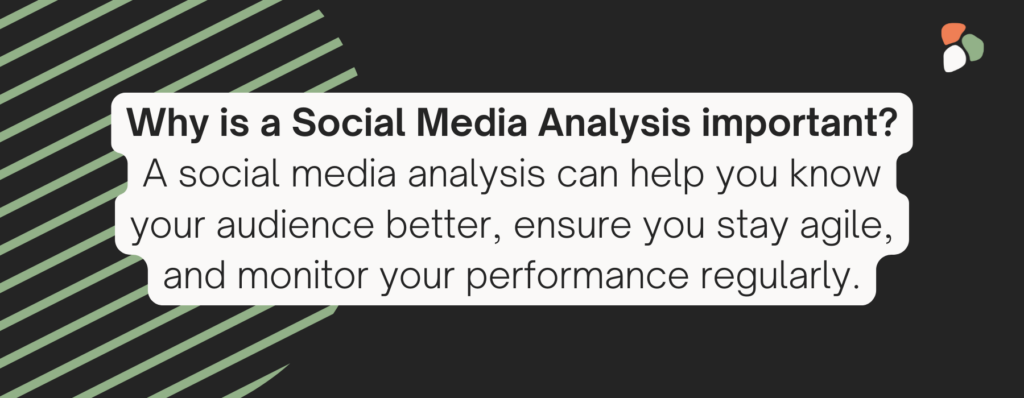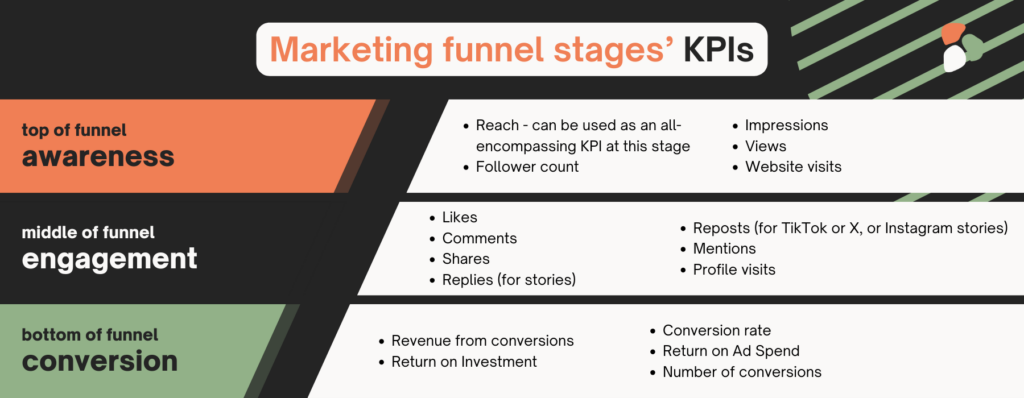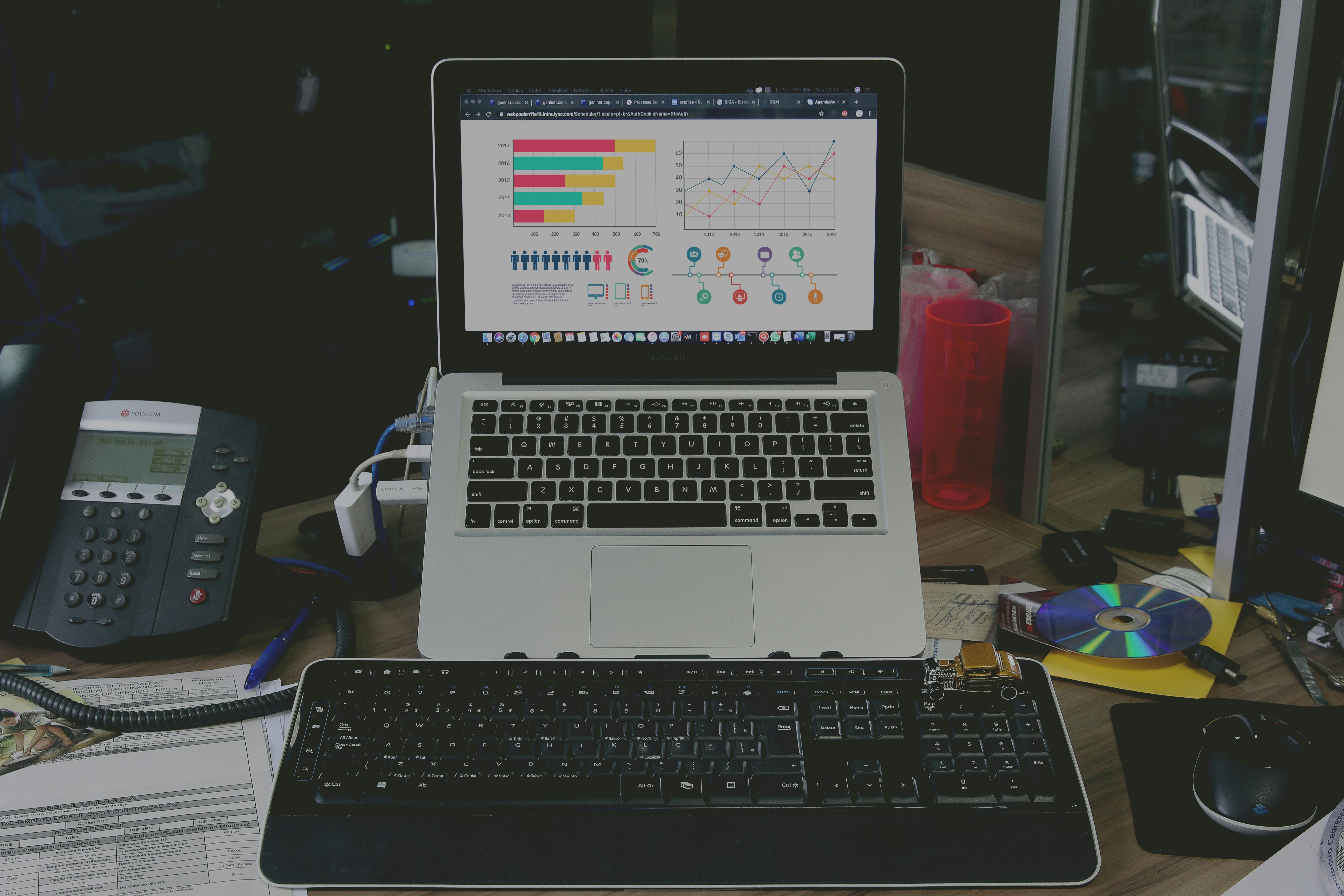A social media analysis can help you know your audience better, track your performance regularly, stay on par with your competitiors and allow you the flexibility and agility to maintain long-term success on social. In this blog post, we will break down the best approaches and how you can turn data into strategy.

What is a social media analysis?
As marketers in the digital age, we have to ensure we make the most of everything social media has to offer. And we are not just talking about its ability to reach users in a matter of milliseconds or its wide array of creative and format opportunities that conventional marketing may not be able to supply.
While those are two very strong assets of social media, in this article we want to focus on another aspect – analytics. One of social media’s prominent benefits and what ultimately makes it stand out against other marketing tools is the ability to track results in real-time, simultaneously as your marketing efforts unfold. These results can then be analysed, and the data can positively contribute to the execution of your marketing objectives. But how exactly does that happen?
benefits of a social media analysis
knowledge and planning
Carrying out a social media analysis regularly allows you to stay on top of your performance and helps you learn what your strongest platforms and content are, often leading to better resource and budget management. It can also point you in the right direction if things are not going as planned, allowing you to highlight the areas of your strategy that require more work and updating. This data often contains all the answers and a social media analysis can lay the foundation for actionable strategies and solutions.
agility and flexibility
Reviewing and adopting your strategy according to your social media analysis results is vital for the long-term success of any brand or business. Regardless of whether it is in response to favourable results or underperformance, staying agile and flexible is always the correct approach.
As part of a social media analysis, you can inspect your key performance indicators' data and compare it to past campaigns, as well as competitors or relevant industry benchmarks to really understand how your content measures up. Once you start to master this skill, you will find that analysis and agility could swiftly turn into some of the most valuable skills in your entourage. But where do you even start?
key performance indicators
A social media analysis can give you a lot of data to help monitor your content’s or ads’ performance, or your own performance against competitors. Reach, views, return on ad spend, clicks – these are just some of the key performance indicators (KPIs) you could be tracking, depending on your strategy objectives. However, we can simplify this by introducing a version of the marketing funnel into the mix, as visualised below.

source: Sprout Social
At first glance, the data you can get from a social media analysis can be quite overwhelming, especially if your objectives require multiple KPIs to be monitored regularly. However, with the help of the marketing funnel, this is visualised in a much simpler way.
Taking into consideration these stages of the marketing funnel, we can take a look at a few combinations of data collected from your social media analysis and what strategies you might want to adopt in response.
Low reach, low engagement
If your social media analysis results show your content is demonstrating low reach and low engagement, there are several actions you could take. Start by looking at simple things like ensuring your captions feature all your relevant keywords and any fitting hashtags, to make your content more easily discoverable.
If that doesn’t give your performance a boost, you may want to consider restructuring your content strategy and experimenting with new types of content. This is a good time to look back at your target audience segments and research what might resonate better with them in terms of format, tone of voice or design.
Looking at your competitors and comparing their performance with yours is also a beneficial step. What does their content look like? What are they doing differently that is making their content well-received by their followers? Extract this information and begin planning ways you can incorporate this into your strategy while ensuring it still reflects your own brand and feels authentic to your brand identity.
Additionally, if your organic efforts are not performing as well as you’d like them, despite thorough audience and competitor research, you may want to invest in paid social media and boost your posts to reach a wider fresher audience.
High reach, low engagement
If your social media analysis shows your organic content is generating high reach but low engagement, start by reviewing your captions. Ensure they feature plenty of call-to-actions and questions to your audience, to further the conversation between your brand and them.
You can stimulate more engagement by introducing stakes. Organising giveaways and contests where engagement will be rewarded, presents users with a good reason to interact with your content.
Also, optimise all available tools in your toolbox. Most social media platforms nowadays offer many new functions, all to help brands and creators generate higher engagement. Polls, Q+A stickers, quizzes – they are all available for you to use to boost your interactions, while also collecting valuable insights from your audience to use in your future content strategy.
Low reach, high engagement
If your social media analysis shows your content is generating a good engagement rate, but relatively low reach, putting a small budget behind your well-performing posts and boosting them could be a good solution. As mentioned previously, boosting is an option that almost all social media platforms support, and compared to running ads, it’s generally a cheaper approach that is still able to generate strong results, especially when aiming to increase reach and awareness.
Try to also implement a regular and frequent posting schedule. Oftentimes, social media algorithms favour those accounts which are active and responsive. Once again, this is a good opportunity to utilise all available formats and tools. Make most of scheduling software platforms like SproutSocial, and play around with different content formats to keep your feed diverse and resource efficiently.
High reach, high engagement
If your socials showcase high reach and high engagement, the logical next step is to explore further growth opportunities. Your strategy is working smoothly, so it's time to take it to the next level by investing in paid socials to reach even more new users and get your content seen by new audiences.
Remember to continue monitoring and reviewing your strategy KPIs regularly, to ensure the longevity of your success. Social media is a dynamic world, so something that works well today, may need updating in a week's time. As long as you master the habit of regular social media analyses, you will be good to go.






